CorVista System®
13 years in development
132 million in research dollars spent 11,000 patients tested
Meet the world's first point-of-care system for evaluating the presence of significant coronary artery disease (CAD) and pulmonary hypertension (PH) in a single visit.
CorVista System®
• 13 years in development
• 132 million in research dollars spent
• 11,000 patients tested
Meet the world's first point-of-care system for evaluating the presence of significant coronary artery disease (CAD) and pulmonary hypertension (PH) in a single visit.
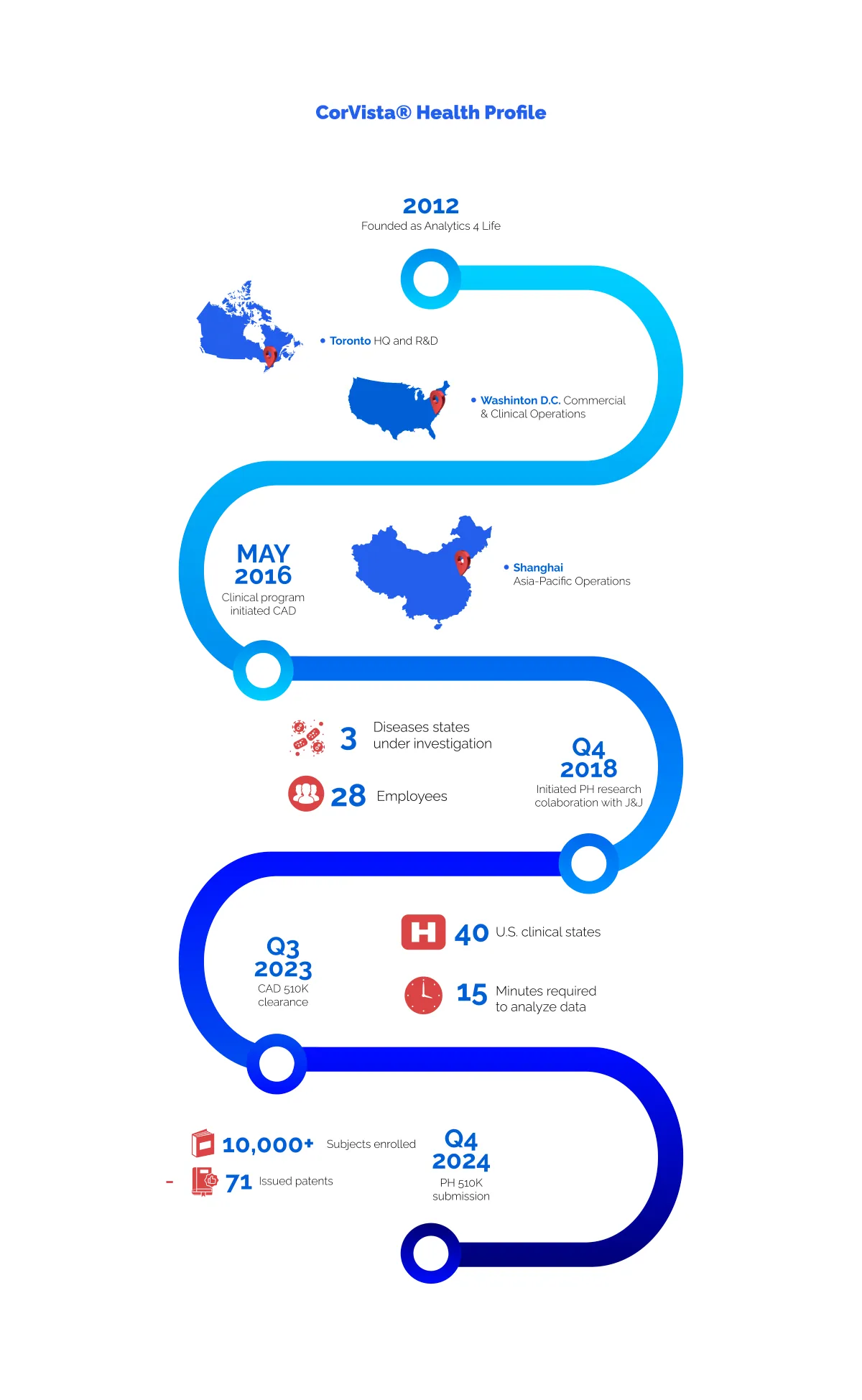

PHYSICIAN REPORT SAMPLES


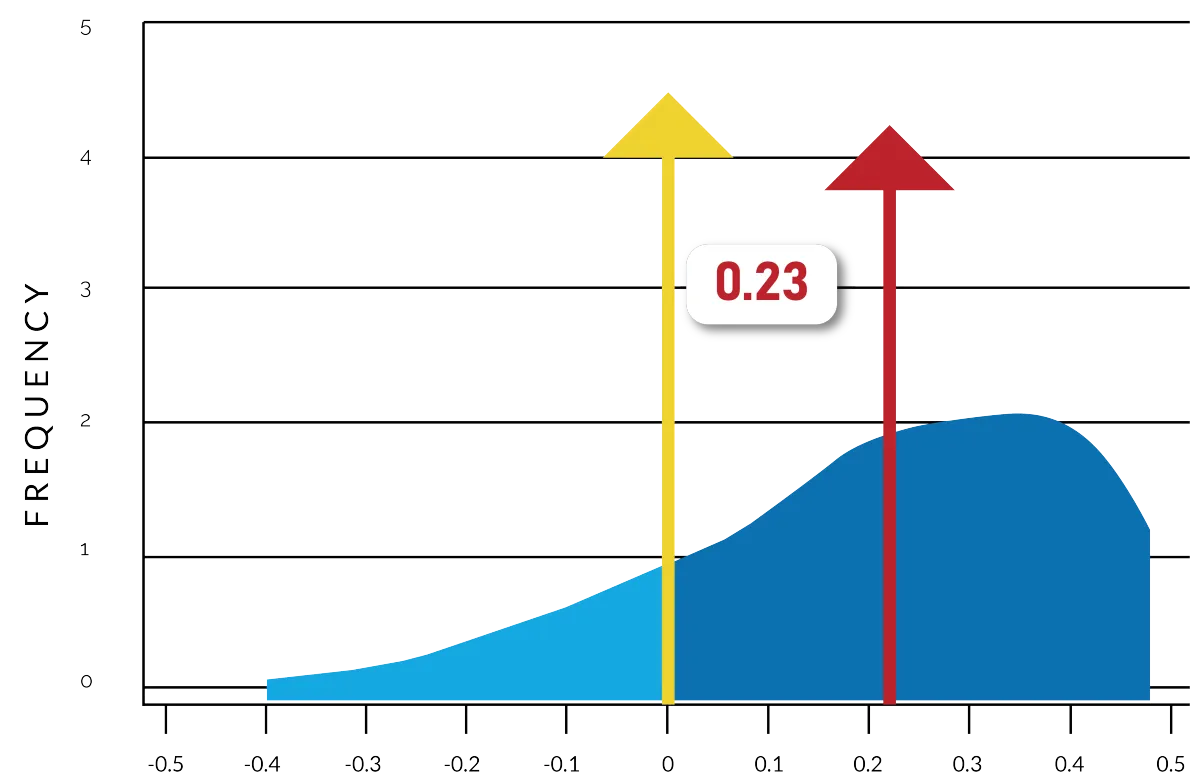
PULMONARY HYPERTENSION
Get Results for Your Patients Right Away
Industry leading accuracy to identify the right care for your patients.
For serious conditions like pulmonary hypertension (PH), the CorVista System’s breakthrough designated technology can reduce the time that patients spend searching for a correct diagnosis (often up to 2.5 years for certain forms of PH) and move them towards an appropriate care pathway.
CORONARY ARTERY
Answers In A Heartbeat
Deliver actionable results at the point of care.Early diagnosis and intervention is key for patients struggling with cardiovascular disease.
That's why providers are turning to the CorVista System, a non-invasive, point-of-care cardiac diagnostic system powered by machine learning, to support accurate diagnosis of both CAD and PH. Equip your team and your patients with proven results at the point of care.


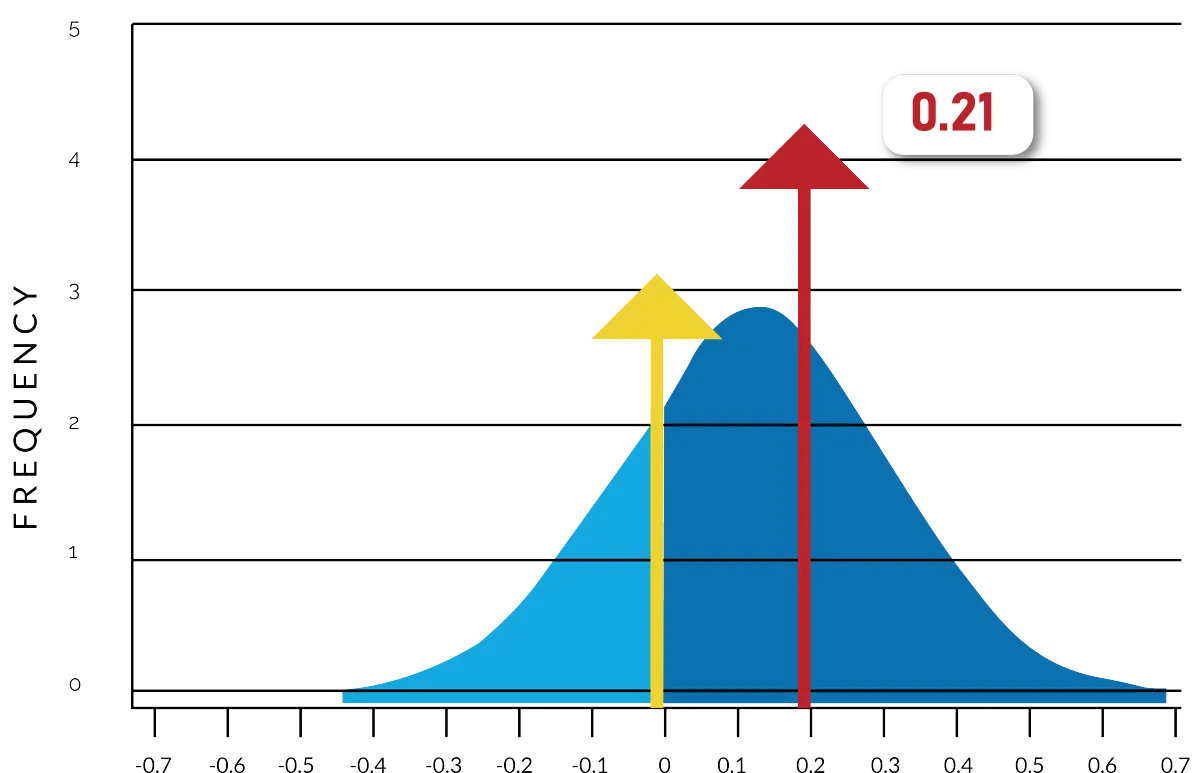
PHYSICIAN REPORT SAMPLES
PULMONARY HYPERTENSION
Get Results for Your Patients Right Away
Industry leading accuracy to identify the right care for your patients.
For serious conditions like pulmonary hypertension (PH), the CorVista System’s breakthrough designated technology can reduce the time that patients spend searching for a correct diagnosis (often up to 2.5 years for certain forms of PH) and move them towards an appropriate care pathway.
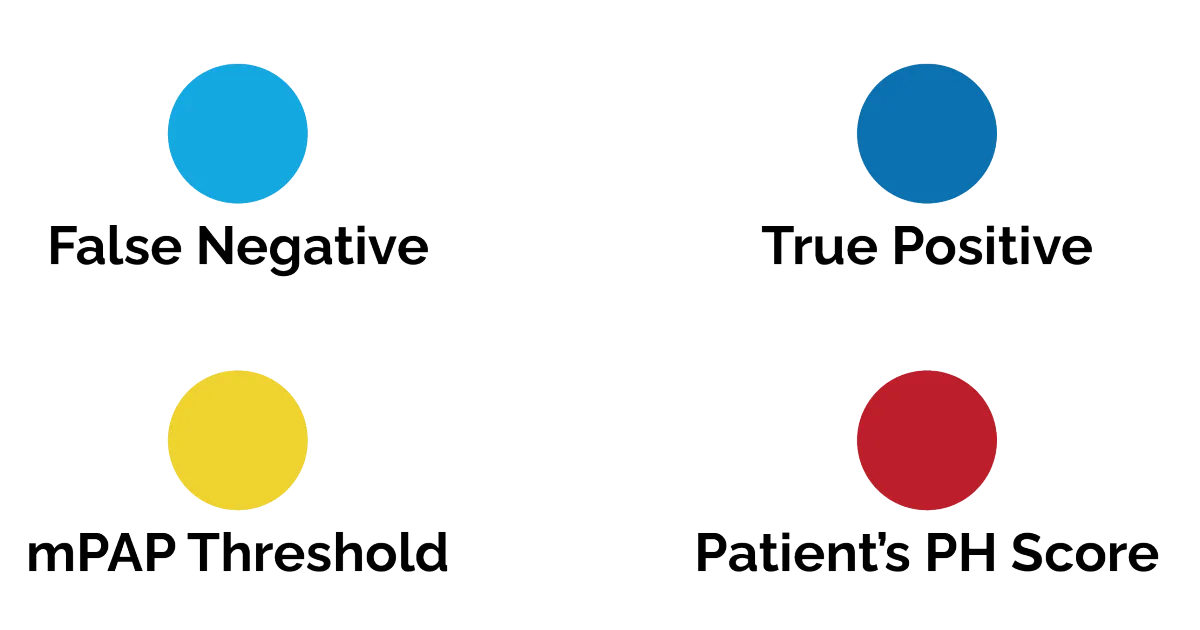


CORONARY ARTERY
Answers In A Heartbeat
Deliver actionable results at the point of care.Early diagnosis and intervention is key for patients struggling with cardiovascular disease.
That's why providers are turning to the CorVista System, a non-invasive, point-of-care cardiac diagnostic system powered by machine learning, to support accurate diagnosis of both CAD and PH. Equip your team and your patients with proven results at the point of care.



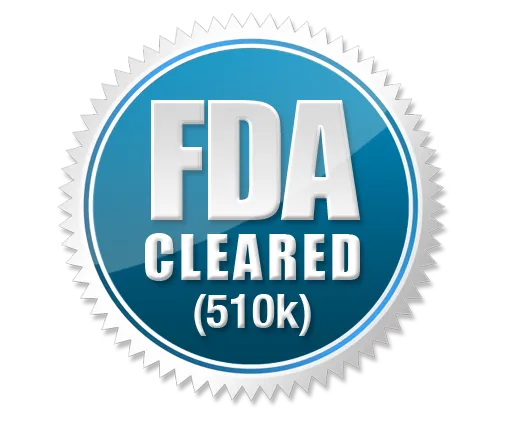
Pulmonary Hypertension FDA Approval
Breakthrough Device K233666 cleared on April 5, 2024
From the public 510(k) summary:
The validation population (A and B) used for performance testing included symptomatic subjects with a range of cardiovascular symptoms and risks factors which prompted the use of RHC and TTE for evaluation of their symptoms.
The diagnostic performance of the CorVista System in this broad population was demonstrated to be 82% sensitivity and 92% specificity, NPV of >99%, with a 0.95 AUC-ROC.

Coronary Artery Disease FDA Approval
Breakthrough Device K233666 cleared on April 5, 2024
From the public 510(k) summary:
The validation population (A and B) used for performance testing included symptomatic subjects with a range of cardiovascular symptoms and risks factors which prompted the use of RHC and TTE for evaluation of their symptoms.
The diagnostic performance of the CorVista System in this broad population was demonstrated to be 82% sensitivity and 92% specificity, NPV of >99%, with a 0.95 AUC-ROC.
CorVista Process
The CorVista System is a next-generation, non-invasive cardiac diagnostic platform. Here's how it works.
STEP 1
Acquire Signals and
Upload Data
The CorVista System collects signals naturally emitted by the heart while the patient is at rest then automatically transfers that data to a secure cloud platform.
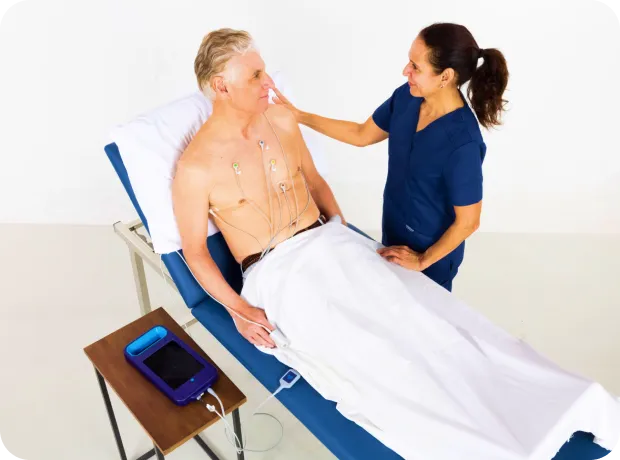
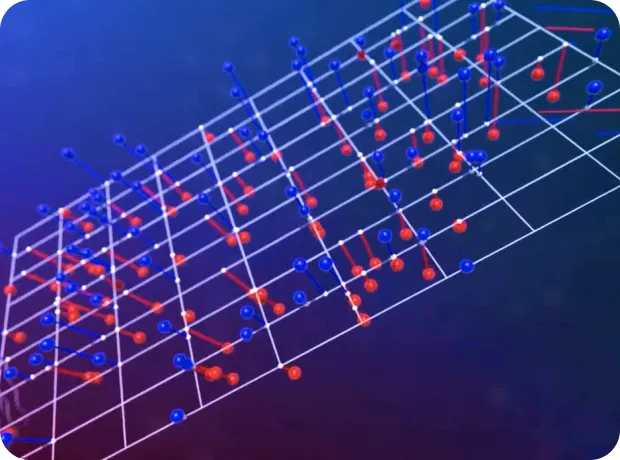
STEP 2
Analyze Data with
Machine Learning
Our proprietary machine learning algorithms perform complex mathematical calculations on patient data then generate results on the presence of cardiovascular disease.
STEP 3
Provider Evaluates
Analysis
Providers can evaluate our CorVista® Analysis through a secure web portal shortly after the procedure is completed, allowing both patients and providers to access results at the point of care.
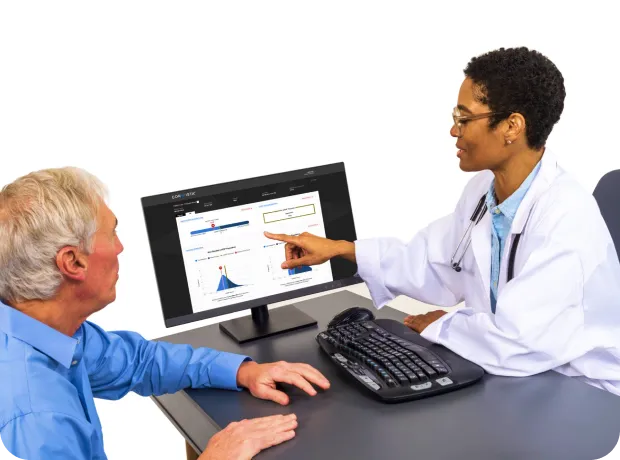
CorVista Process
The CorVista System is a next-generation, non-invasive cardiac diagnostic platform. Here's how it works.
STEP 1
Acquire Signals and
Upload Data
The CorVista System collects signals naturally emitted by the heart while the patient is at rest then automatically transfers that data to a secure cloud platform.

STEP 2
Analyze Data with
Machine Learning
Our proprietary machine learning algorithms perform complex mathematical calculations on patient data then generate results on the presence of cardiovascular disease.

STEP 3
Provider Evaluates
Analysis
Providers can evaluate our CorVista® Analysis through a secure web portal shortly after the procedure is completed, allowing both patients and providers to access results at the point of care.

Publications
Pulmonary Hypertension & Heart Failure
Pulmonary Hypertension
& Heart Failure
Coronary Artery Disease
Cullman Internal Medicine First in Alabama With CorVista
Machine Learning Bypasses Need for Some Invasive Procedures
By Jane Ehrhardt
Cullman Internal Medicine First in State With CorVista - Birmingham Medical News 4/10/25, 10:37 AM
A new noninvasive diagnostic technology can quickly assess the likelihood of coronary artery disease (CAD) and pulmonary hypertension (PH) at the time of evaluation. Arriving first in Alabama at Cullman Internal Medicine, a 23-physician practice, the CorVista system utilizes machine learning to analyze a patient's cardiac signals, bypassing the need for invasive procedures to identify potential several cardiovascular issues at the point of care.
Cullman Internal Medicine has referred patients to the cardiologists at the Cullman Regional Medical Group Cardiology Clinic (CRMGCC). “We have now employed CorVista technology in our cardiology office, and also in the hospital setting, to help us streamline diagnosis,” says Tracy Neal, MD, a cardiologist with CRMGCC.

In the two months since the clinic started using CorVista, they have already seen the device’s accuracy save a life. A 72-year-old patient had been evaluated for atypical chest pain and underwent an evaluation by a cardiologist and a nuclear stress test. The stress test came back normal. However, the patient’s symptoms continued. “So we ran the CorVista test on this man and it was abnormal, indicating the possibility that we had missed something,” Neal says. “We performed a heart catheterization and found a 99 percent blockage in the main artery down the front of the heart. That's called a Widow Maker blockage. CorVista was able to pick up a heart problem that we had previously missed and saved the man’s life.”
Currently, the CorVista System holds FDA approval to detect the likelihood of coronary artery disease (CAD) and pulmonary hypertension (PH). The company is currently seeking approval for identifying pulmonary capillary wedge pressure. The system works similar to an EKG. “Whenever the heart beats, it gives off millions of electrical signals, but it also emits millions of other physiologic signals such as impedances, which are resistances within the way electricity flows,” Neal says. “And the heart has a normal movement and a normal vibration.”
The device’s seven sensors attach to the patient to collect specific electrical and physiologic data signals. The information arrives at the handheld device, about the size of an iPad, and the physician sends it along to CorVista’s cloud system where advanced machine learning interprets the results in comparison to data from 11,000 cardiac patients who had undergone catheterization. Then it sends a report back to the handheld device. The whole process takes about 15 minutes. “It’s a binary result,” Neal says. “It’s either positive for the condition or negative for the condition. No test is completely accurate, but this test has an 88 percent sensitivity for determining whether someone has severe significant blockage or not. It also has a 99 percent negative predictive value for determining if someone does not have heart disease, which means that if the test says the heart is okay, there's a 99 percent chance that the heart is indeed okay.”
Practices do not buy the system or pay a subscription. Instead, the company provides the device, and they collect the insurance fee for reading the test, while the physician bills insurance for administering the test.
“It’s another good tool to help us streamline cardiac diagnosis, and it helps us look at a larger number of patients in a much more rapid fashion,” Neal says. “For primary care clinics, the system provides a valid evaluation on who needs to get in to see the cardiologist quicker. And it gives the practice a proven test to back up that request. We don't pay anything at all, so it was a no-brainer for us to incorporate it.”
Dr. Tracy Neal Discusses what is CorVista?
Discover what CorVista brings to the table, and how this is a game changer in the medical field.
Cullman Internal Medicine First
in Alabama
With CorVista
Machine Learning Bypasses Need for Some Invasive Procedures
By Jane Ehrhardt
Cullman Internal Medicine First in State With CorVista - Birmingham Medical News 4/10/25, 10:37 AM

A new noninvasive diagnostic technology can quickly assess the likelihood of coronary artery disease (CAD) and pulmonary hypertension (PH) at the time of evaluation. Arriving first in Alabama at Cullman Internal Medicine, a 23-physician practice, the CorVista system utilizes machine learning to analyze a patient's cardiac signals, bypassing the need for invasive procedures to identify potential several cardiovascular issues at the point of care.
Cullman Internal Medicine has referred patients to the cardiologists at the Cullman Regional Medical Group Cardiology Clinic (CRMGCC). “We have now employed CorVista technology in our cardiology office, and also in the hospital setting, to help us streamline diagnosis,” says Tracy Neal, MD, a cardiologist with CRMGCC.
In the two months since the clinic started using CorVista, they have already seen the device’s accuracy save a life. A 72-year-old patient had been evaluated for atypical chest pain and underwent an evaluation by a cardiologist and a nuclear stress test. The stress test came back normal. However, the patient’s symptoms continued. “So we ran the CorVista test on this man and it was abnormal, indicating the possibility that we had missed something,” Neal says. “We performed a heart catheterization and found a 99 percent blockage in the main artery down the front of the heart. That's called a Widow Maker blockage. CorVista was able to pick up a heart problem that we had previously missed and saved the man’s life.”
Currently, the CorVista System holds FDA approval to detect the likelihood of coronary artery disease (CAD) and pulmonary hypertension (PH). The company is currently seeking approval for identifying pulmonary capillary wedge pressure. The system works similar to an EKG. “Whenever the heart beats, it gives off millions of electrical signals, but it also emits millions of other physiologic signals such as impedances, which are resistances within the way electricity flows,” Neal says. “And the heart has a normal movement and a normal vibration.”
The device’s seven sensors attach to the patient to collect specific electrical and physiologic data signals. The information arrives at the handheld device, about the size of an iPad, and the physician sends it along to CorVista’s cloud system where advanced machine learning interprets the results in comparison to data from 11,000 cardiac patients who had undergone catheterization. Then it sends a report back to the handheld device. The whole process takes about 15 minutes. “It’s a binary result,” Neal says. “It’s either positive for the condition or negative for the condition. No test is completely accurate, but this test has an 88 percent sensitivity for determining whether someone has severe significant blockage or not. It also has a 99 percent negative predictive value for determining if someone does not have heart disease, which means that if the test says the heart is okay, there's a 99 percent chance that the heart is indeed okay.”
Practices do not buy the system or pay a subscription. Instead, the company provides the device, and they collect the insurance fee for reading the test, while the physician bills insurance for administering the test.
“It’s another good tool to help us streamline cardiac diagnosis, and it helps us look at a larger number of patients in a much more rapid fashion,” Neal says. “For primary care clinics, the system provides a valid evaluation on who needs to get in to see the cardiologist quicker. And it gives the practice a proven test to back up that request. We don't pay anything at all, so it was a no-brainer for us to incorporate it.”
Dr. Tracy Neal Discusses what is CorVista?
Discover what CorVista brings to the table, and how this is a game changer in the medical field.
Testimonials
See what our clients have to say
Tom's experience with CorVista
Your Paragraph text goes Lorem ipsum dolor sit amet, consectetur adipisicing elit. Autem dolore, alias, numquam enim ab voluptate id quam harum ducimus cupiditate similique quisquam et deserunt, recusandae. here

Adrian Lam, CFA
We are thrilled to announce Adrian Lam, CFA as our newly appointed CEO, a respected healthcare leader with a track record of driving growth and innovation. Adrian brings close to 20 years of healthcare experience and a longstanding commitment to translating advanced technology into patient outcomes, which aligns with CorVista’s mission. Concurrently, Timothy Attebery, DSc, MBA, FACHE, former American College of Cardiology and MedAxiom CEO, has been appointed Board Chairman.
Ready to learn more?
Engage the world's first point-of-care system for evaluating the presence of significant coronary artery disease (CAD) and pulmonary hypertension (PH) in a single visit.
Ready to
learn more?
Engage the world's first point-of-care system for evaluating the presence of significant coronary artery disease (CAD) and pulmonary hypertension (PH) in a single visit.

COMPANY
CUSTOMER CARE
LEGAL
FOLLOW US
Copyright Perfect Rhythm Medical Consultants. 2025 All Rights Reserved.